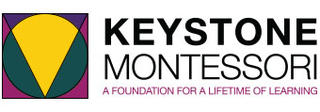
If you find yourself considering Montessori education as an option for your family, you undoubtedly have plenty of questions. If you take one thought away from this article let it be this: anyone can call their school “Montessori”. There is no regulation on use of the name. If you have read articles and heard stories from other families about the incredible benefits of this method of education, they are absolutely the result of a high fidelity Montessori program. Read on to learn more about what to look for.
What’s in a name?
Throughout her life, Dr. Maria Montessori strove to retain a certain level of control over the course the Montessori movement took. It was, after all, her life’s work and bore her name. She wanted to be sure that guides were trained correctly, methods were applied as she intended, and a complete set of authentic materials graced the shelves of classrooms. Today, there are two major organizations that carry on her work and are generally regarded as the standard for Montessori education. They are AMI (Association Montessori International), which was created by Dr. Montessori herself, and AMS (American Montessori Society), which branched off from AMI in 1960. Today the two organizations maintain a positive working relationship and mutual respect for the work they both do, which is to carry on the legacy of Dr. Montessori and ensure visionary, high-quality education for children.
Recognition, Affiliation, and Accreditation
If you are looking for a high fidelity Montessori program (which is critical if you want your child to reap the benefits!), it’s important to find a school that is connected to either AMI or AMS. There are different levels of connection, depending on how closely a school aligns their work with what is considered ideal. Keystone Montessori is an AMI school and adheres to the standards set by AMI.
To obtain Recognition Status through AMI, a school must undertake a rigorous multi-year process that begins with a self-study and culminates with an in-person visit by an AMI consultant. A specific set of criteria must be met, including having 100% of lead teachers being trained through an AMI sponsored teacher training program. If a school meets all criteria, but has a lower percentage of AMI trained teachers, the school may be considered AMI Affiliated or AMI Associated. Schools must reapply for recognition status on an annual basis with an AMI consultant visit every three years.
Specifically Trained Educators
Montessori guides (the term we often use for our teachers) are specially trained. In addition to college degrees they have obtained, they have also earned special Montessori credentials from recognized training programs. Many of these programs run for several years, include many hours of lectures and reading, practical examinations, written papers, material making assignments, and multiple observations in classroom settings. Many people consider the level of work required for obtaining such a credential to be similar to that required for earning a master’s degree.
Multi-Age Groupings
One of the most important elements of a Montessori school is that the classes are organized not by single chronological year classes, but into multi-age mixed groups. This approach is intentional and critical to higher levels of learning. Children ages three to five (preschool and kindergarten) are grouped together, as are elementary-aged children. Some schools break the elementary years up into lower (grades 1-3) and upper (grades 4-6) while others keep them all together. Infants, toddlers, and adolescents are also placed into similarly mixed groups.
Why do we do this? There are many reasons. For one, younger children have no shortage of models to surround themselves with. They can see what is expected of them as they grow, both socially and academically, and they work to emulate what they see older children doing. As for the older children, they are given the unique opportunity to practice leadership skills and cultivate empathy for younger children. In addition, they often help teach, which reinforces their own mastery of subjects.
The Classroom Environment
There is much to be said for the Montessori classroom environment - more than we could possibly summarize in a paragraph or two here. That said, we can certainly highlight the most critical features you should look for in a well-run program.
● Classrooms will feature ample natural light and children will have access to the outdoors.
● Furniture will be sized for the children who are meant to use it, and there will be a variety of different furniture options. This means in lieu of desks in rows, you should see group work areas, independent work areas, and space to work comfortably on the floor.
● Natural materials like wood, glass, and woven baskets should take the place of plastics.
● Specialized Montessori materials should be well organized and adorn shelves at the children’s height.
● The room may be decorated with living plants and carefully hung works of art. You should not see walls covered with posters or busy color schemes.
● It should be apparent that the guide is not the center of the room, but rather serves as an element of support for the children who work there.
● Children should have free access to take care of their own personal needs, such as using the restroom, serving themselves snacks, having drinks of water, and retrieving all materials necessary to explore and work.
We hope this article has been a helpful guide as you embark on your journey into Montessori education. If you have any questions or would like any guidance, please feel free to contact our Admissions Director, Heather Bonacorda.

